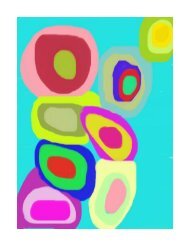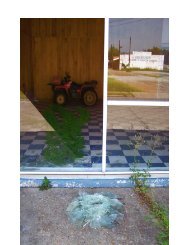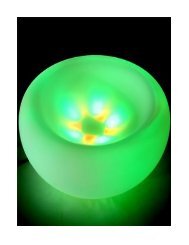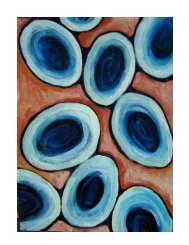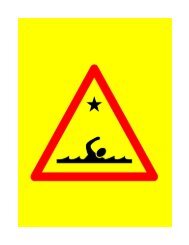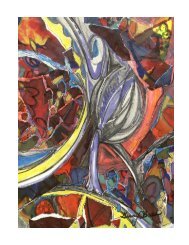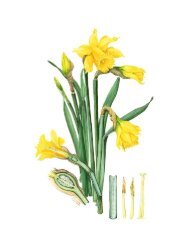Commentaries on Bob Cobbing - The Argotist Online
Commentaries on Bob Cobbing - The Argotist Online
Commentaries on Bob Cobbing - The Argotist Online
Create successful ePaper yourself
Turn your PDF publications into a flip-book with our unique Google optimized e-Paper software.
the level of the book rather than at the level of individual poetic.<br />
I questi<strong>on</strong> that a problem exists because I quite like the unintegrated feel of the book. It seems to<br />
ask: What do I sound like? It makes us ask: Why? What it isn’t is an illustrated book. It doesn’t tell a<br />
story although it is full of fragmented stories. It asks the witnessing reader for the story. <strong>The</strong><br />
feeling that it isn’t complete is quite welcome even if that makes it less than c<strong>on</strong>venti<strong>on</strong>ally<br />
entertaining.<br />
Some “edginess” and “embarrassment” was identified in Hawkins... Well, some edginess and<br />
embarrassment can be productive. Before a performance of Domestic Ambient Noise [5], I have<br />
often thought: I’m not sure how this is going to sound? What is this is doing to my/our text? How<br />
will this come across? Would I/should I have agreed to do this (if I’d known)? And from such<br />
edginess comes the energy that gives the performance its edge. It’s a matter of c<strong>on</strong>text, and of<br />
expectati<strong>on</strong>.<br />
If it’s not an illustrated book then it’s a visual text. I think anything can be a visual text. I see no<br />
reas<strong>on</strong> not to think that anything can be a visual text. I see no use in identifying anything as not a<br />
visual text. I do see possible problems in identifying anything as not a visual text. I’d prefer to be<br />
descriptive rather than prescriptive.<br />
It follows for me that the best we can do is to say what kinds of visual text are or have been in use<br />
and try to spot what kinds of visual text might now be made.<br />
Sometimes, for denotative purposes, I make a distincti<strong>on</strong> between “the linear text” and “the<br />
visual”; but I do not think that such a distincti<strong>on</strong> is widely applicable.<br />
In much visual work, not least <strong>Cobbing</strong>’s, the visual retains, and sometimes acquires, linearity.<br />
<strong>The</strong>se differences and similarities were what <strong>Cobbing</strong> and I set ourselves to investigate post-DAN<br />
[Domestic Ambient Noise], although we did not express it that way to each other at the time. We<br />
set up some procedures in draft form and went away from each other for the purpose of<br />
generating our individual starting materials. We haven’t yet (July 2000) met to take it further; but,<br />
at the same time, we have been making two other sequences of which the latter, plouk [6], is<br />
relevant here.<br />
<strong>The</strong> starting point is printed material, advertisements, fliers etc. that have been sampled and the<br />
samples transformed. It retains its alphabetical origins; I might be prepared to argue that it is very<br />
heavily formatted text; it cannot, though, be “read” as if it were <strong>on</strong>ly alphabetical—the formatting<br />
has g<strong>on</strong>e bey<strong>on</strong>d the supportive.<br />
I tried using the term “visually-emphatic text” which, whatever its virtues as terminology, is a<br />
mouthful, though it has been used by others at least <strong>on</strong>ce!<br />
<strong>The</strong> point was to argue that “it” is “all” <strong>on</strong>e field of practice with the individual instances<br />
differently-located al<strong>on</strong>g various axes. So not something which is a separate genre or sub genre<br />
but poetry which emphasises <strong>on</strong>e aspect of itself to a great extent.



